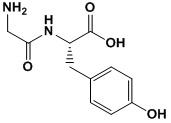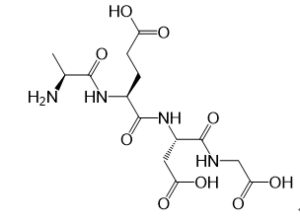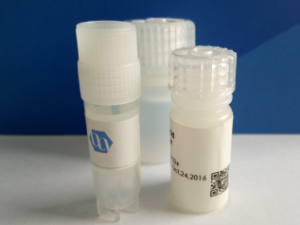$ 250.0
Quantity: 10Gram
In stock
Description
Product name: GY
Catalog#: 1808046
Synonyms: Glycyl-L-tyrosine, Gly-Tyr, Glycyltyrosine, (S)-2-(2-Aminoacetamido)-3-(4-hydroxyphenyl)propanoic acid,
CAS NO.: 658-79-7
Sequence: Gly-Tyr
M.W: 238.24
M.F.: C11H14N2O4
Purity: 95%
Counter ion: Acetate
Format: Lyophilized powder
Compound ID: 92829
Description: A novel peptide with a specific calcium-binding capacity was isolated from whey protein hydrolysates. The isolation procedures included diethylaminoethyl (DEAE) anion-exchange chromatography, Sephadex G-25 gel filtration, and reversed-phase high-performance liquid chromatography (HPLC). A peptide with a molecular mass of 237.99 Da was identified by liquid chromatography-electrospray ionization/mass spectrometry (LC-ESI/MS), and its amino acid sequence was confirmed to be Gly-Tyr. The calcium-binding capacity of Gly-Tyr reached 75.38 μg/mg, increasing by 122% when compared to the hydrolysate complex. The chelating interaction mode between the Gly-Tyr and calcium ion was investigated, indicating that the major binding sites included the oxygen atom of the carbonyl group and nitrogen of the amino or imino group. The folding and structural modification of the peptide arose along with the addition of the calcium ion. The profile of (1)H nuclear magnetic resonance (NMR) spectroscopy demonstrated that the electron cloud density around the hydrogen nucleus in the peptide changed was caused by the calcium ion. The results of ζ potential showed that the Gly-Tyr-Ca chelate was a neutral molecule in which the calcium ion was surrounded by the specific binding sites of the peptide. Moreover, thermogravimetry-differential scanning calorimetry (TG-DSC) and calcium-releasing assay revealed that the Gly-Tyr-Ca chelate exerted excellent thermal stability and solubility in both acidic and basic conditions, which were beneficial to calcium absorption in the gastrointestinal tract of the human body and, therefore, improved its bioavailability. These findings further the progress in the research of whey protein, suggesting the potential in making peptide-calcium chelate as a dietary supplement.
Usage: For Scientific Research Use Only, Not for Human Use.



